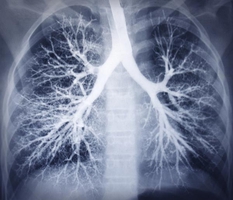Interventional Pulmonology

A medical intervention occurs when a health care provider takes action to treat or cure the condition of a patient. Some common types of intervention include surgery, medication, vaccination and rehabilitation.
Interventional pulmonology is a field within pulmonary medicine that focuses on the use of advanced techniques and technology to diagnose and treat patients with lung diseases such as asthma, COPD and lung cancer.
For example, at OSF Saint Francis Medical Center in Peoria, Illinois, we have begun to perform bronchoscopic lung volume reduction surgery as a treatment for COPD.
This is a minimally invasive, non-surgical procedure where one-way valves are inserted in your airways.
These valves help push out carbon dioxide and mucus and prevent fresh oxygen from being trapped in damaged segments of the lung. This improves the function of the remaining lung tissue, decreases breathlessness and increases your ability to exercise.
Pulmonary Interventions
Other pulmonary interventions include:
- Bronchoscopy - diagnosis and treatment of lung problems using a long, thin tube – called a bronchoscope – inserted through the nose or mouth and into the airways.
- Endobronchial ultrasound (EBUS) - a bronchoscopic procedure used to obtain images of and extract fluids from the lungs and lymph nodes for the purpose of biopsy.
- Navigation bronchoscopy – used to locate hard-to-find tumors and control bleeding in the airways.
- Radial probe – an ultrasound probe used to provide real-time images to localize tumors.
- Needle biopsy – A needle is used to extract fluid from the lung.
- Transbronchial biopsy – A bronchoscope is used to move a tiny camera into the main airways of the lungs.
- Cryobiopsy – Lung tissue sticks to a frozen probe, which is inserted and extracted through a bronchoscope.
- Thoracentesis – Fluid is extracted from the area between the lungs and the chest wall.
- PleurX catheter – a tube inserted in the chest cavity to drain excessive fluid around the lungs.
- Percutaneous tracheotomy – a minimally invasive procedure to allow the patient to breathe when the nose and mouth are obstructed.
- Pulmonary function testing – a series of tests used to determine how well your lungs are working.